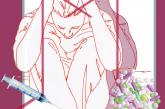Opinion

International medical graduates facing challenges amid COVID-19
- Author:
- Raman Baweja, MD, MS
- Shikha Verma, MD
- Ritika Baweja, MD
- And Balkozar Adam, MD
Publish date: July 9, 2020
Prospective residents, graduating residents, and fellows need the ability to join the American health care system promptly, the authors say.
Article

Opioid use disorder in adolescents: An overview
- Author:
- Shikha Verma, MD
Treatment needs to include interventions that address young patients’ unique needs.
